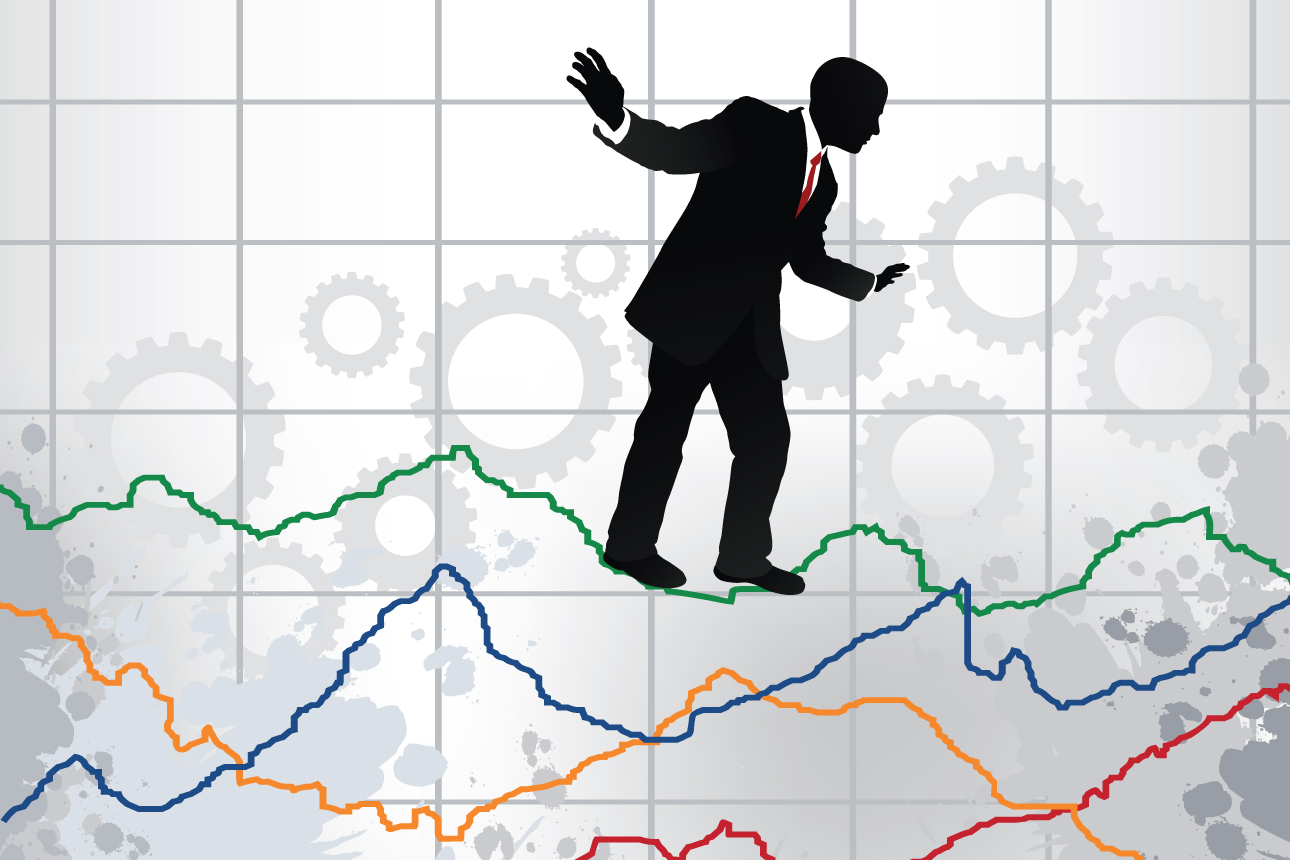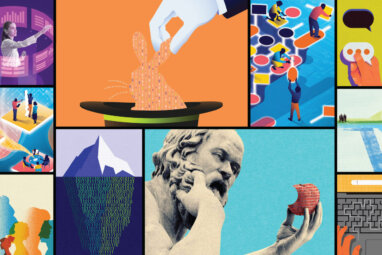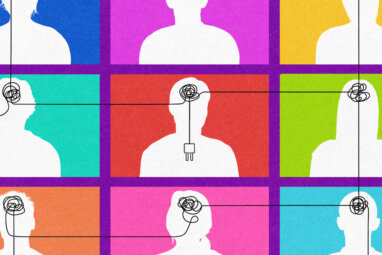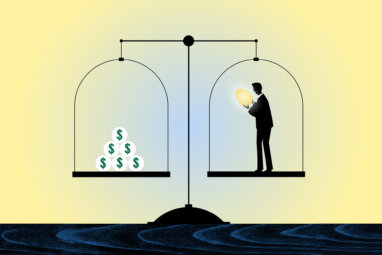Why Our Knowledge Economy Can Survive the New Age of Pestilence
Today’s engine of economic growth may lessen the long-term economic impact of the COVID-19 pandemic.
Topics
Frontiers

History, it has been observed by an unknown wag, is a sequence of disasters, and the stuff in between is boring. While each catastrophic event is unique in the chaos that it sows and how it shapes subsequent human events, in the throes of crisis, we often look back, seeking patterns to assuage our uncertainty. So it’s not surprising that interest in the 1918 Spanish flu pandemic surged along with the coronavirus earlier this year — but perhaps the important lesson to take from history is not what is similar but what is different.
It would have been convenient if all major disasters could be classified as either purely natural, such as earthquakes, and purely human-made, such as civil war, but the historical record does not always allow such facile categories. Sometimes nature and people work hand in hand to kill, disrupt, and at times change the course of human history when ignorance, cruelty, and the rigid adherence to some cause or ideology aggravate what nature wreaks.
In the past, catastrophes, especially unprecedented and unanticipated ones (that is, black swans) have changed the course of history. The Justinianic Plague that broke out in 541 A.D. may have prevented the reconquest of Italy by Byzantium and the possible resuscitation of the Roman Empire. The Black Death, one leading scholar has argued, produced far-reaching demographic, economic, and cultural changes, but it also “prepared a road for renewal.”1 Human-made disasters similarly changed the direction of history, none more than the repeated invasions of the Middle East by Mongol invaders and the diseases inflicted on the original populations of the New World by European explorers. Regions that had been prosperous and sophisticated were reduced to poverty-stricken backwaters.
How has modernization changed the way economies are exposed to, respond to, and are affected by disasters? At some point around the year 1800, a major transition took place that drastically changed the dynamic properties of the entire economic system, similar to a phase transition in physics. Before the Industrial Revolution, economic growth was largely the result of improved markets and gains from trade — what economists call Smithian growth. The riches of the great cities of the Italian Renaissance and the Dutch Golden Age were to a large extent based on commerce, finance, and the institutions that supported it. Trade made regions rich, but it was fragile. Greedy rulers and predatory invaders, to name but two threats to prosperity, often killed the geese that laid the golden eggs of commerce.
Then came revolution. Following the scientific revolution of the 17th century and the Enlightenment of the 18th, people slowly started to apply formal knowledge of natural laws and phenomena to what we would call production. Applying this knowledge was difficult and slow, and its success was very uneven. But around 1914, it became clear that technological change had replaced markets as the chief engine of economic progress. Economic growth is still a vehicle that runs on dual engines, and modern prosperity owes a lot to Smithian effects, such as the rise of global trade, specialization, better capital markets, migration, and supply chains. Yet, current prosperity would have been unimaginable without advances in science and technology.
What needs to be stressed is that these engines are inherently different. Markets, mobility, and trade are vulnerable to what economists call exogenous shocks — unexpected or unpredictable events. They depend on peaceful politics, trust, and cooperative institutions that make markets work. These institutions are inherently frail. A shock, whether war or virus, can wipe those out in just days. We have experienced this in our lifetimes: A major terrorist attack or a pandemic can disrupt markets in a matter of weeks and bring the infinitely complicated machinery of international markets to a grinding halt. In August 1914, with the outbreak of hostilities in Europe, the entire system based on the gold standard and the institutions that supported international specialization and exchange collapsed. It took many years for the system to recover, and it could be argued that not until the 1950s did the world return to the kind of proto-globalization that had taken place in the decades before 1914. Today’s pandemic is an extreme example. The Economist magazine worries about the end of globalization as we know it.2 Airlines, ports, and ride-hailing companies have seen their demand collapse to a sliver. The mobility economy is in an induced coma.
In the past, shocks to the Smithian system that made markets work could lead to devastating and permanent damage to economic performance and living standards. The best-known case was the decline of the Roman Empire. It died of many shocks — pandemics, invasions, possibly climate change — but it was a society that had relied on trade and mobility to sustain its wealth. Once the institutions that sustained the trade around the Mare Nostrum (Mediterranean Sea) had collapsed, Europe sank into centuries of poverty and barbarism. Eventually, trade revived in the so-called commercial revolution of the 12th century, and some measure of prosperity slowly started to return to Europe. But it remained vulnerable to the cruelty of nature and the misdeeds of men.
What modern economic growth has achieved, based on more productive technology and the science that underlies it, is a level of prosperity that is much more resilient. To see this, we can look just at major shocks to the world economy in the 20th century: two major wars, the Spanish flu pandemic of 1918, the Great Depression, the 9/11 terrorist attacks — the list of calamities goes on and on. Yet, none has permanently reduced the growth rate of the world economy, and the worldwide decline in hunger, poverty, and disease has continued apace. The reason for this resilience is very simple: Major shocks cannot really undo growth when it is based on knowledge.
Knowledge, once acquired, cannot easily be reversed. In theory, of course, knowledge can be lost when everyone who possesses it dies and there are no stored-up copies in books or models. This can happen, and it has in fact occurred in history. Some of the sophisticated mechanisms from antiquity, such as the famous Antikythera mechanism, an astronomical device built in the 1st century B.C. and found at the bottom of the sea in a wrecked Greek ship, would have stumped a medieval clock or instrument maker. If important knowledge is sufficiently diffused and accessible, however, it becomes increasingly unlikely that any invention will ever be “lost.” Hence, although wars and natural catastrophes can disrupt markets, commercial life, and the international economy, they rarely cause much erosion of the knowledge base that made an economy prosperous and productive in the first place. Market economies and the international division of labor, once disrupted, can be repaired fairly quickly and economies can bounce back — if the suitable institutions such as law and order, peace, and effective contract enforcement are in place.
As a result, the 20th century has shown a resilience that has no equal in history. Despite the best efforts of homicidal dictators and foolish generals, most human-made catastrophes have, on the whole, not materially slowed the rate of economic growth in the past century. The example that drives this home is the astonishing recovery of Germany after 1945. World War II did not just destroy markets, commercial networks, and the institutions that supported them; in Germany, much of the physical capital was wiped out by Allied bombing. Yet, the ingenuity of German engineering and chemistry survived the war, and within a decade Europeans were driving their Volkswagens and washing their clothes in AEG washing machines. The Germans who managed the comeback called it the “economic miracle,” but in retrospect, it was not a miracle at all — just an affirmation that their prosperity rested on a solid base of knowledge.
Most relevant to what is occurring in 2020 is the experience of the world economy in the late 1910s. That catastrophe was a double whammy, as the Spanish flu came on top of the indescribable horrors of World War I. The economic cost of the dismantlement of the institutions that undergirded international markets and the massive disruptions due to the pandemic were vast.3 The impact of the Spanish flu in terms of human life was massive: If the estimate of 50 million dead worldwide is even remotely close to the mark, this constituted approximately 2.5% of the world’s population. In the United States, the death toll was 675,000, or about 0.67% of the population. This death rate would be equivalent to approximately 2 million deaths in the U.S. today, about 20 times higher than the estimated death toll of the coronavirus pandemic up to May 2020. Moreover, unlike COVID-19, the Spanish flu was especially fatal for young adults and prime-age workers. The disruption was deep and painful, and it has been argued that it caused a decline in consumption and GDP. Real per-capita GDP in the U.S. during the three years following the 1918 pandemic was somewhat lower than during the peak years of World War I — and areas particularly affected by the flu experienced a more substantial decline of output — but by 1923, it had fully recovered from its slump.4 The U.S. economy, much like the European economies, was ready for the rapid expansion of the Roaring ’20s. The stock market, interestingly enough, did exceedingly well in 1919. In short, as Efraim Benmelech and Carola Frydman concluded, “the 1918 influenza did not kill the U.S. economy.”5
The pandemic is a classic unanticipated supply shock. But it will not be the next Black Death or Irish Potato Famine. In a modern economy, the advanced nations are much more resilient than ever before, even if the sharp temporary fall in output and employment seem frightening. For one, a considerable proportion of the labor force can work from home, an option that few had in 1918. Supply chains and international trade may be disrupted to the detriment of globalization, but ingenuity and imagination find substitutes.6 Moreover, research efforts on COVID-19-related topics have increased enormously (despite the difficulty of lab work within social-distancing guidelines). Compared with 1918, we are far more resilient now. We know far more about what is hitting us than people knew about the Spanish flu, and our knowledge is expanding rapidly — if not rapidly enough for an impatient public.
Knowledge not only makes for a more productive and resilient economy but can also lead to the kind of agility and problem-solving ability that is especially needed in the face of sudden unanticipated shocks. When faced with a massive and unanticipated challenge, modern society turns not to priests but to scientific experts. The difference is that science works. The way technology advances in many cases is through focusing devices — society recognizes that it urgently needs a solution to a major problem, and intellectual resources and efforts are redirected to provide a solution.7 The wars against smallpox in the 18th century and polio in the 20th, the wartime Manhattan Project, and the development of affordable solar panels and other green energy technologies are examples of such focused efforts. Since early 2020, we have seen the research community turn upon this virus from every direction — diagnosis, cure, and vaccine, producing a complete analysis of its RNA to look for vulnerabilities. Compare those efforts with the horrible responses of ignorant populations to the Black Death or even the Spanish flu. Knowing more does not guarantee success, but it improves the odds and persuades the public that the shock is transitory because of the widespread belief that science will find an answer.
Leaders of our business and technology community would be wise to keep sight of the flexibility and adaptability of our economy, as unemployment soars and businesses small and large in the service sector face bankruptcy. The transition to a post-coronavirus economy will be longer and more painful than the optimists believe, but the fundamentals of modern prosperity — technology that supports a living standard unprecedented in human history and the capability of science to solve problems — have remained unshaken. At the end of the day, the post-pandemic economy may not be all that different from what we had in 2019, and insofar that it is different, not all changes will necessarily be bad.8
References (8)
1. D. Herlihy, “The Black Death and the Transformation of the West” (Cambridge, Massachusetts: Harvard University Press, 1997): 57, 81.
2. “Goodbye Globalisation,” The Economist, May 16-22, 2020, 7.








